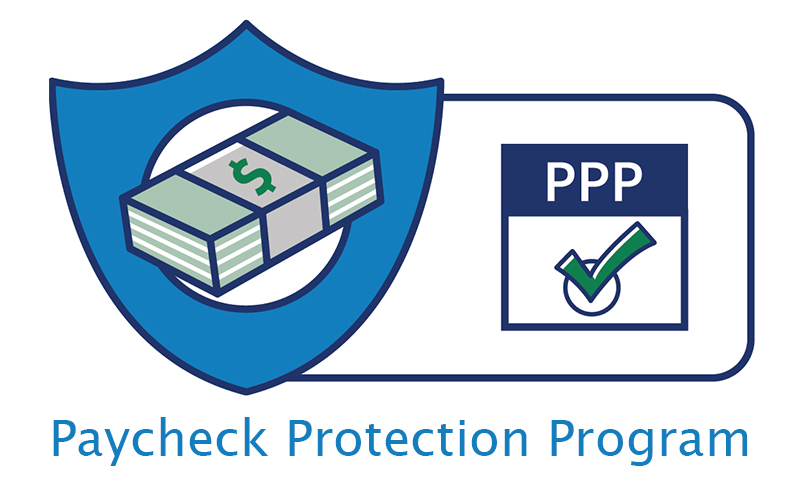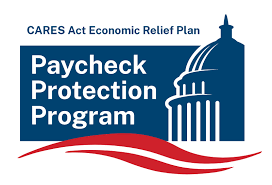
Small Business Owners Just Got More Time to Use Their PPP Loans
But they may also have gotten a bit more complicated too — at least for those small business owners who already secured a PPP loan under the old rules and want to take advantage of the new ones.
One of the biggest concerns with the program was that it hamstrung business owners in terms of when and how they could use the money if they wanted their loan to qualify for full forgiveness. Those who have gotten loans already had to spend the money in the first eight weeks and use at least 75% of it for payroll expenses — even though many businesses weren’t even open during that period or were not operating at full capacity.
The new rules certainly can benefit small business owners who have not yet closed on a PPP loan. The good news is that the program still has
close to $130 billion left, per the Small Business Administration’s latest count. But June 30 remains the last day by which a PPP loan application can be approved. So anyone who hasn’t applied yet should do so soon.
But the new rules likely will not benefit small business owners who received their PPP loans early and have spent most — if not all — of their funding in accordance with the old rules.
* * * * * * * * * * * * * * * * * * * * * * * * * * * *
At Health Insurance 4 Everyone, we not only want to improve our customer service but also interact with our customers on a social media level that was not available before. Interested in connecting with us? Look us up on….
Twitter: Healthinsurane4
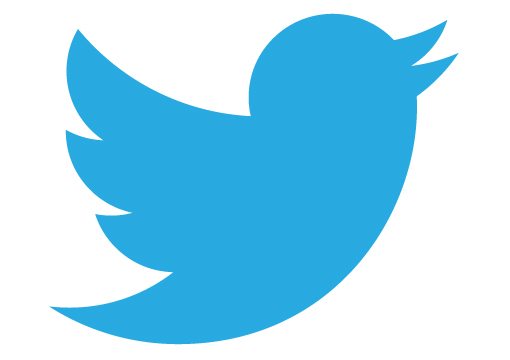


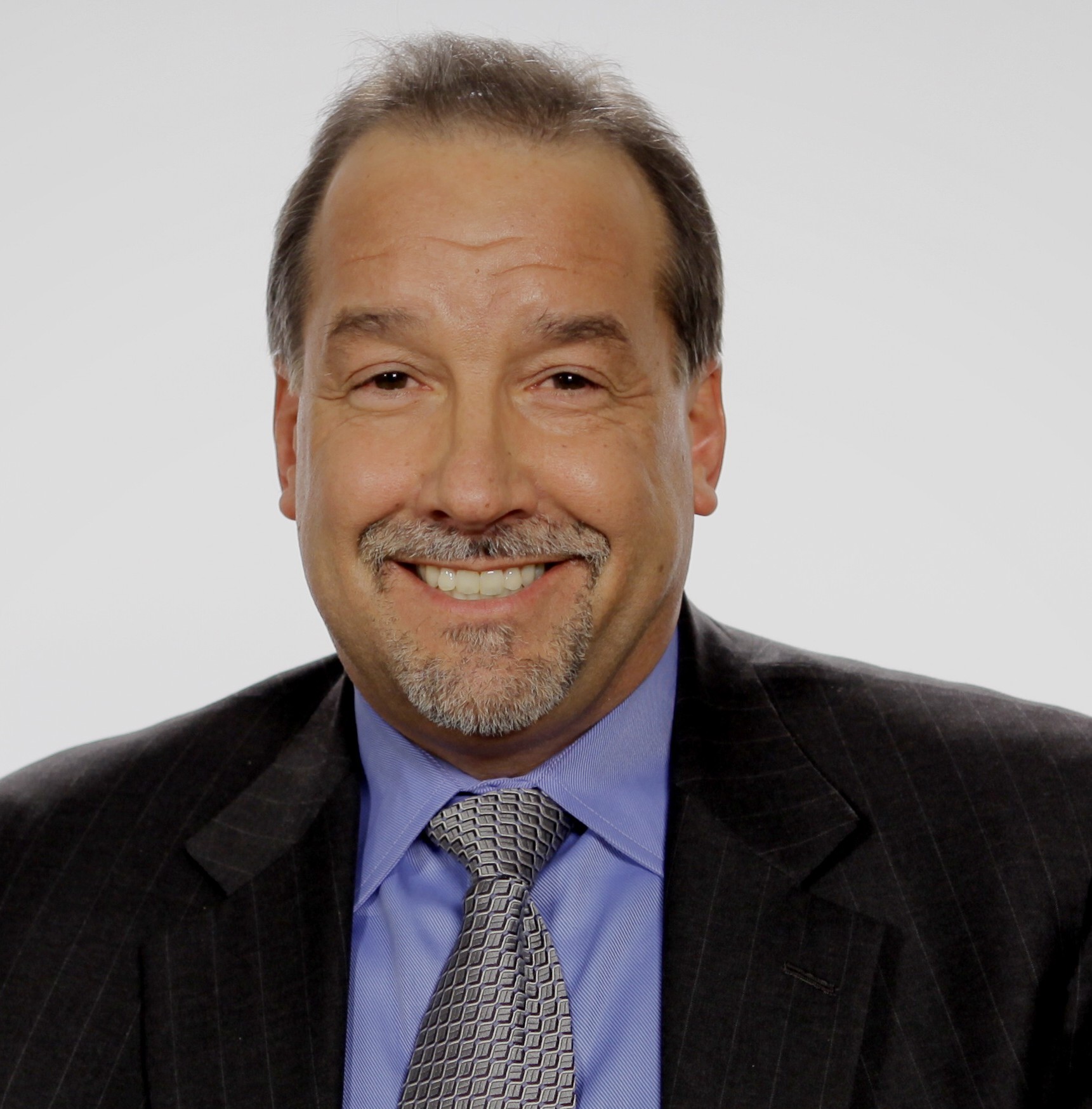

Read more
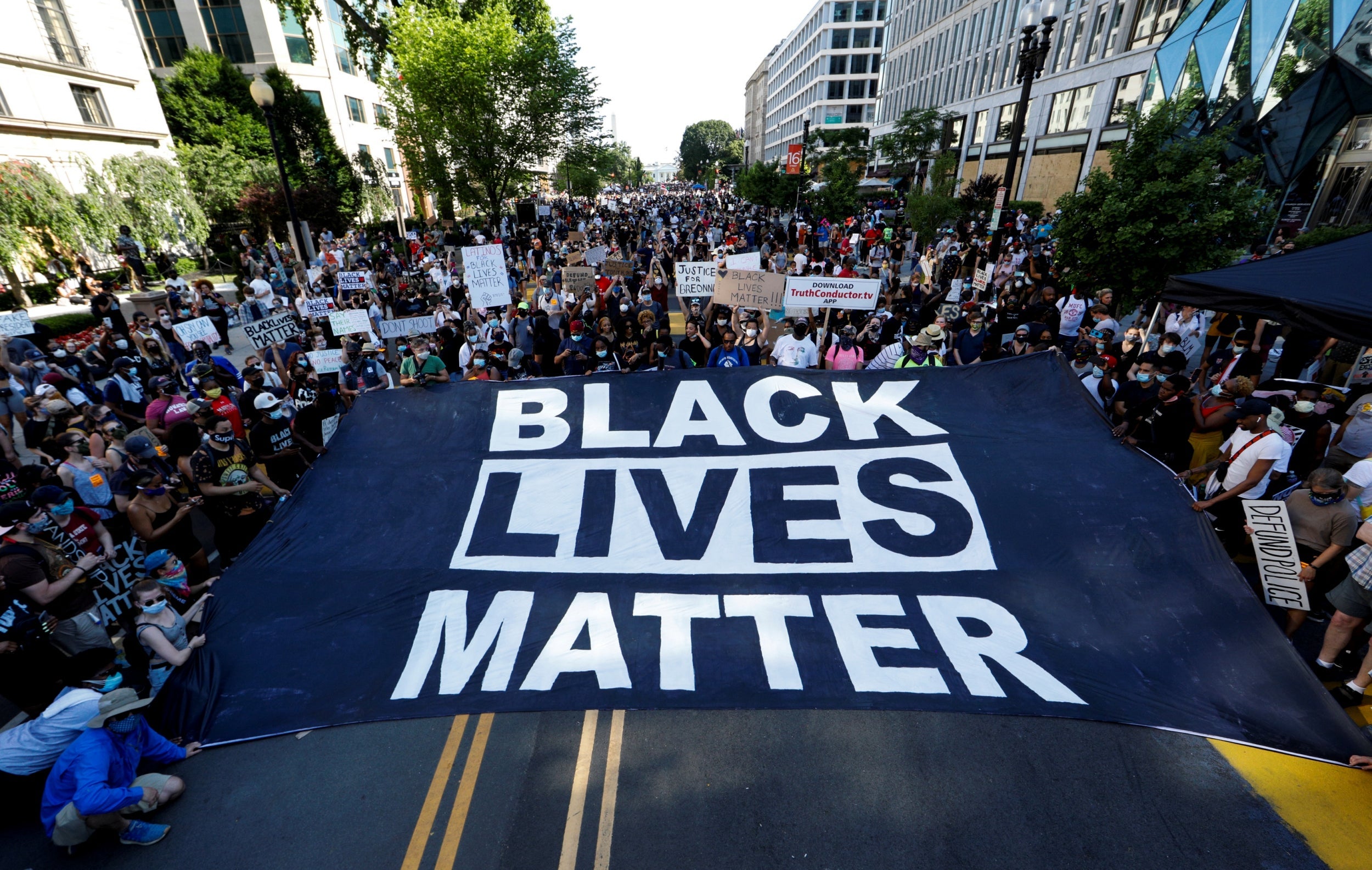
As historic protests continue to sweep the country two weeks after the death of George Floyd, the Minneapolis City Council announced it would move to disband the city’s police department. Nine members of the council — a veto-proof majority — made the vow during a community rally. The vow to disband the police came just days after the Minneapolis City Council voted to ban chokeholds and neck restraints. Congress is slated to introduce reforms that include a chokehold ban, a limit on qualified immunity for officers and a restriction on military weapons. While news reporting may be bias, social media videos of police brutality toward peaceful protestors has sparked many local governments to take action as the protests continue. Although many of these reforms will be subjected to a long debate among local officials, some activists say it is a good start.
In Louisville, KY, the City Council unanimously passed “Breonna’s Law” Thursday night that banned the use of “no-knock” warrants. The legislation was named after Breonna Taylor, a 26-year-old EMT, who was killed in her home while in bed in March by Louisville police officers while executing a no-knock warrant. Louisville Mayor Greg Fischer, who suspended the use of no-knock warrants last month, said he will sign the bill. “This is one of many critical steps on police reform that we’ve taken to create a more peaceful, just, compassionate and equitable community.” The officers involved in Taylor’s death are under investigation and have been placed on administrative leave.
New York’s state legislature voted to repeal parts of a provision that shielded police disciplinary records from the public. The repeal of 50-A means that police officers across the state must disclose personnel records used to evaluate performance. Criminal justice advocates have been pushing for the repeal for years. The legislation also bans officers from using chokeholds, prohibits false race-based 911 calls and appoints the state attorney general to be an independent prosecutor in any case where an officer shoots an unarmed person. The state Senate approved the bill and the state Assembly approved it with later in the day. New York City Mayor Bill de Blasio also announced a sweeping set of reforms that would shift funding from the NYPD to other sectors of the city’s budget. De Blasio said he will work with the city council to hammer out the details over the next three weeks, but told reporters Monday that the amount would be “something substantial.”
Washington DC Mayor Muriel Bowser announced she will sign the emergency legislation passed by the City Council that bans the police from using neck restraints on suspects. The bill also bans the use of tear gas, pepper spray, rubber bullets and stun grenades to disperse protesters. The Council also passed a bill that requires the mayor to release police body camera video from any police-involved death or serious use of force within three days of the incident. The family members of the person involved in the incident will be the first to see the video, according to the bill’s language.
Seattle Mayor Jenny Durkan announced short- and long-term changes to the city’s police force to address the concerns about police from residents. She said she will review the Seattle Police Department’s budget with a “special focus on listening community voices throughout the process.” Durkan has also called for an independent prosecutor at the state level to investigate and prosecute any police officers as well as updating the department’s procedures for mass protests.
New Jersey Attorney General Gurbir Grewal announced that the state will ban police departments from using chokeholds, carotid artery neck restraints or similar tactics. Grewal said their use has led to several incidents where a suspect suffered asphyxiation. The order provides an exemption “in the very limited situations when deadly force is necessary to address an imminent threat to life.”
Read more

There are almost 8,000,000 confirmed cases of the coronavirus worldwide, with over 420,000 deaths. As many countries open up again, the World Health Organization warned the situation is getting worse globally. Nearly 75% of recent cases came from 10 countries, mostly in the Americas and South Asia, said the WHO. The WHO also said that the spread of COVID-19 by asymptomatic people appears to be rare.
Latin America remains the epicenter of the pandemic now with the highest tolls reported in Brazil, Mexico, Chile and Peru — which together account for over 1 million confirmed cases. The WHO said Central and South America have likely not reached peak transmission yet. Cuba remains announced they are closing in on the tail end of the pandemic, where infections have been on the decline for two months.
The number of confirmed coronavirus cases continues to rise in U.S. states that were among the first and most aggressive to reopen, leading some local officials to reconsider reopening plans. In Oregon, Gov. Kate Brown announced a 7-day statewide pause on further reopening as health officials study the data and try to contain budding outbreaks. In Arizona, Gov. Doug Ducey tried to reassure people that the rise in confirmed cases was expected and that the state’s hospitals have the capacity to handle a further surge.
Recent data shows 21 states have seen an increase in their average daily new Covid 19 cases this week than in the previous week. Alabama, Oregon and South Carolina are among the states with the biggest increases. Alabama saw a 92 percent change in its seven-day average, while Oregon’s seven-day average was up 83.8 percent and South Carolina’s was up 60.3 percent. Hospitalizations have risen as well. For example, Arkansas has seen a 120.7 percent increase in hospitalizations, from 92 cases to 203, since Memorial Day.
Health officials warn that mass gatherings of any type could worsen the spread of the virus, as the 2020 election heats up and nationwide protests against racism and police brutality stretch into their third week across the globe. CDC continues to study the spread and effects of the novel coronavirus across the United States. We now know from recent studies that a significant portion of individuals with coronavirus lack symptoms (“asymptomatic”) and that even those who eventually develop symptoms (“pre-symptomatic”) can transmit the virus to others before showing symptoms. This means that the virus can spread between people interacting in close proximity—for example, speaking, coughing, or sneezing—even if those people are not exhibiting symptoms.
In light of this new evidence, CDC recommends wearing cloth face coverings in public settings where other social distancing measures are difficult to maintain (e.g., grocery stores and pharmacies) especially in areas of significant community-based transmission. It is critical to emphasize that maintaining 6-feet social distancing remains important to slowing the spread of the virus. CDC is additionally advising the use of simple cloth face coverings to slow the spread of the virus and help people who may have the virus and do not know it from transmitting it to others. Cloth face coverings fashioned from household items or made at home from common materials at low cost can be used as an additional, voluntary public health measure.
Read more
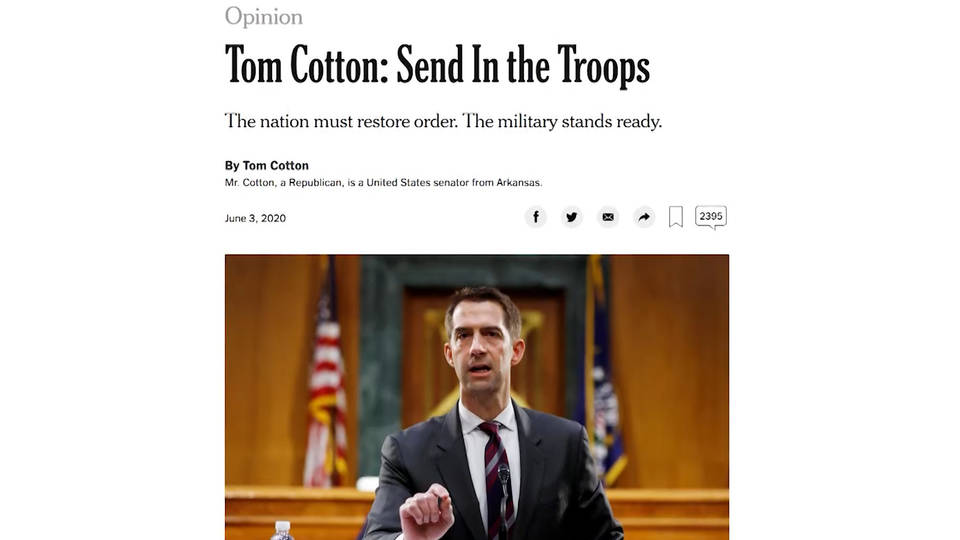
The New York Times editorial page editor James Bennet has resigned following outrage from staff and readers over the publication of an op-ed by Senator Tom Cotton about the protests called “Send in the Troops.” In a statement, The Times said that James Bennet had resigned and that Katie Kingsbury would serve as the acting editorial page editor through the November election. The deputy editorial page editor, Jim Dao, is being reassigned to the newsroom and is stepping off the masthead.
In the opinion piece, Sen. Tom Cotton, advocated for deploying the military for riots. The senator described looting in New York City as “carnivals for the thrill-seeking rich as well as other criminal elements,” and wrote that leftist ntifa movement had infiltrated protest marches despite an earlier Times article that reported Antifa involvement in the protests as misinformation. The column immediately drew backlash, with dozens of Times journalists voicing their opposition, tweeting the headline, caption and a form of the phrase “Running this puts Black @NYTimes staff in danger.”
Both Sulzberger and Bennet first defended the decision to run the column but the Times reversed itself and said the column had not met editorial standards. The Times reported that Bennet said in a meeting with staff members that he had not read the essay before it was published. And the paper added an editor’s note to the top of the original column. “We’ve examined the piece and the process leading up to its publication,” said Eileen Murphy, a Times spokeswoman. “This review made clear that a rushed editorial process led to the publication of an op-ed that did not meet our standards. As a result, we’re planning to examine both short-term and long-term changes, to include expanding our fact-checking operation and reducing the number of op-eds we publish.”
Meanwhile, Stan Wischnowski, the top editor of The Philadelphia Inquirer, has also resigned days after the paper published a piece titled “Buildings Matter, Too.” The newsroom vet resigned after backlash from staff over that headline on a story that said “there could be a gaping hole in the heart of Philadelphia” amid protests over the killing of George Floyd.
Dozens of journalists signed an open letter to their editors explaining their decision to call out “sick and tired,” CNN reported. “They said they have spent ‘months and years’ trying to gain the public’s trust only to have it “eroded in an instant by careless, unempathetic decisions.” The paper issued an apology the next day. But it wasn’t just the article that played a role in Wischnowski’s resignation. Wischnowski and other editors had scheduled a staffwide Zoom meeting to discuss race at The Inquirer and the pressures in particular faced by journalists of color before the article was published.
The Zoom session started off with Wischnowski telling staffers about the strides made in diversifying its 213-member newsroom but the session turned intense and emotional. Some journalists could be seen in tears in their Zoom frames. Critics, black and white, denounced the pace of change at the paper, sharply criticizing both coverage and the racial and gender mix of the staff. Several journalists pointed out that the newspaper could muster only one male African American reporter to cover the protests and police response convulsing a city that is majority minority. Hours after the wrenching Zoom session, about 50 journalists of color signed an open letter calling for faster changes at the paper. The following day, most of the minority staff took the day off from work in protest.
Read more

Protests against police violence continue across the country as many cities have imposed curfews. Thirty-one states and the District of Columbia have activated their National Guards, with nearly 80 localities implementing curfews in response to the nationwide protests following the death of George Floyd. Protests largely remain peaceful during the day but by night, protests turn to riots. At least 9,300 people have been arrested across the US during protests.
Protesters across the US and globe keep gathering to march, some shouting slogans including “I can’t breathe,” which Floyd told the Minneapolis police officer who had a knee on his neck in a bystander’s video of the incident. Others have gathered to lie face down for 8 minutes and 46 seconds, the amount of time Chauvin held his knee on Floyd’s neck. In many cities, just before the 8 p.m. curfew begins, police begin shooting tear gas, flashbang grenades and rubber bullets at demonstrators in an attempt to disperse crowds.
In Houston, Texas, 16 members of George Floyd’s family joined a crowd of 60,000 protesters who marched to City Hall to remember Floyd, who spent most of his life in Houston before moving to Minnesota in 2014 for a fresh start. His family urged protestors to continue to fight for police reform and equality by protesting but said rioting is not the way to fix this. Chauvin and Floyd both worked security at the same night club with together with Chauvin working outside security and Floyd working inside the bar. Former coworkers of the two said they bumped heads over Chauvin’s aggressiveness with patrons of the club. Floyd’s family believe George’s death was, in part, personal.
Two separate autopsies confirmed Floyd’s death was a homicide. George Floyd’s memorial service was planned for Thursday in Minneapolis, and his funeral was scheduled for next Tuesday in Houston. Minnesota Attorney General Keith Ellison has filed charges against all four Minneapolis police officers involved in the killing of George Floyd. A charge of second-degree murder was added against Officer Derek Chauvin, who was already facing a third-degree murder charge. The other three officers present were charged with aiding and abetting the murder. Thomas Lane, Alexander Kueng and Tou Thao were arrested with bail set at $750,000 each. Minnesota, Governor Tim Walz said the state’s Department of Human Rights has opened a civil rights investigation into the Minneapolis Police Department.
Many wonder how we got here or believe the arrest of all four officers involved should quell the protests but George Floyd is not the only person protestors seek justice for. Protestors say Floyd was just the last straw in a growing list of black people that have been killed with no charges for the officers involve or charges being filed months after, only after protests start. News media coverage of the protests has been largely bias and focused on reports of looting have marred the message peaceful protestors want to make. Social media sites like tik tok or youtube can give the world a more factual account of what goes on during these protests in every city by those that are actually there and countless videos show protestors stopping the looters, chasing them off or handing them over to police.
Read more
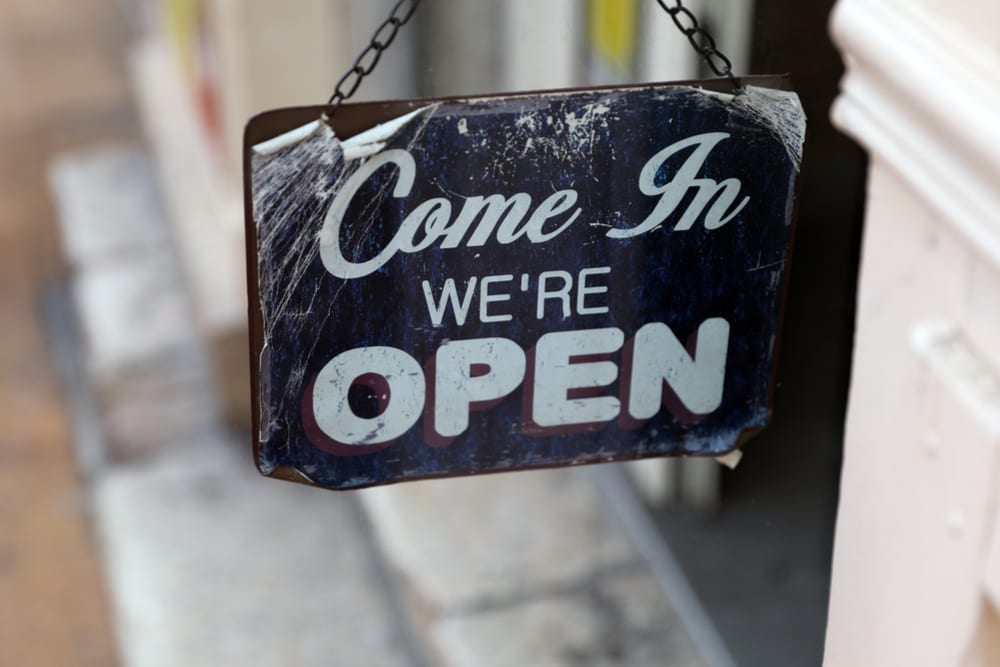
There are now over 5 million confirmed cases of the coronavirus and more than 325,000 known deaths around the world. Over 2 million people around the world have recovered from the virus. Despite the US having less than 5% of the world’s population, there are almost 1.5 million confirmed cases with over 100,000 deaths, representing over one-quarter of all fatalities and almost one-third of the confirmed cases. Over 450,000 people have recovered from Covid 19 but there are now cases in the US of people that have been re-infected, meaning they did not develop antibodies to build immunity with their first infection.
Forty-eight states will be at least partially reopened this week as health experts continue to warn of the danger of a hasty end to lockdowns. Each state has their own guidelines on what businesses have reopened and a timeline on further openings. There are 17 states that have seen an uptick in new cases since reopening. Officials from the World Health Organization say those who ignore measures such as social distancing are at risk of seeing a resurgence of the coronavirus. They also advise people to wear face masks when they are in groups. While coronavirus generally doesn’t spread outdoors as easily as it does indoors, there’s still a risk with any cramped crowd — especially because the virus can spread by just talking.
A cluster of new cases emerged after a swim party in Arkansas. In Atlanta, several recent prep school graduates also tested positive for the coronavirus, including one who had friends over for a graduation party. NY Governor Andrew Cuomo confirmed new COVID-19 cases are predominantly coming from people leaving their homes to shop, exercise or socialize. Meanwhile, in California, Orange County’s coronavirus cases continue to mount, with over 4,000 cases reported. COVID-19 cases are on the rise in Texas, with 1,800 new infections reported last Saturday — the highest single-day increase in Texas so far. South Dakota has also seen a spike in cases since reopening.
Some states are now seeing drops in the number of confirmed cases. New Jersey, one of few states that had one of the strictest and longest stay at home orders, has seen a decrease in cases. This appears to be relatively bright news for hard-hit New Jersey, second in the country only to New York for the number of total reported cases with over 143,600 confirmed and over 10,000 deaths.
Missouri also saw a drop in cases when they began allowing all businesses to reopen May 4, but then an increase during the second week of reopening. Businesses were allowed to reopen provided they could abide by certain social distancing guidelines. Indoor retail businesses must limit their number of customers to no more than 25% of normal capacity, and local communities can choose stricter rules if they choose. Missouri has over 11,000 cases and over 600 deaths. Idaho, which only has around 2,500 cases, also saw a decrease in reported cases.
As each state opened, many leaders stressed the importance of following the social distancing guidelines but left responsibility up to it’s’ citizens. The CDC recommends wearing cloth face coverings in public settings where other social distancing measures are difficult to maintain (e.g., grocery stores and pharmacies) especially in areas of significant community-based transmission. They say that maintaining 6-feet social distancing remains important to slowing the spread of the virus. CDC is additionally advising the use of simple cloth face coverings to slow the spread of the virus and help people who may have the virus and do not know it from transmitting it to others. Cloth face coverings fashioned from household items or made at home from common materials at low cost can be used as an additional, voluntary public health measure.
Read more

Physicians caution that amid a desire to put an end to the Covid-19 pandemic, developers of drugs and vaccines have become overly enthusiastic about the chances their products will work. Several vaccine developers have issued statements looking into the future — setting possible timetables for study completion and vaccine manufacturing.
Biotech company Moderna said early trials of their coronavirus vaccine show promising results as volunteers developed antibodies against the virus. Eight people took part in the study. The company, which is developing the vaccine with the National Institutes of Health, says it will move on to larger-scale trials and that a vaccine could be made available as soon as January. Moderna is collaborating on its vaccine development with the National Institute of Allergy and Infectious Diseases. Dr. Anthony Fauci, the director of NIAID, said while Moderna’s numbers were limited, “it was good news” and he was “cautiously optimistic” about the vaccine.
According to the World Health Organization (WHO), there are currently over 100 vaccine efforts underway around the world. There are 10 vaccines in human clinical trials worldwide. There are four teams in the United States: Moderna, Pfizer, Inovio and Novavax. Five Chinese companies have vaccines in human trials. University of Oxford is the only team in Europe currently running trials. Inovio and Moderna have said they expect their large-scale clinical trials, known as Phase 3 trials, to last around six months. Pfizer hasn’t given a timetable for its Phase 3 trial. Worldwide, there are 114 more candidates in pre-clinical trial stages.
One big stumbling block for any vaccine trial is that Covid-19 infection rates in many areas of the world are flattening out or declining. The point of Phase 3 is to vaccinate people and then see if they naturally become infected, and with lower rates of circulating virus, the study subjects are less likely to be exposed to the virus in the first place. For a vaccine clinical trial to be successful, there needs to be sufficiently high levels of the virus circulating in the community. If there isn’t enough virus around, it will be impossible to tell if the vaccine protected the study subjects, or if they were just never exposed to the virus.
The global effort to develop a vaccine is just the beginning of this race. It also takes time to ramp up vaccine production and deciding how it will be distributed will be difficult in a world of more than 7 billion people. New drugs and vaccines traditionally go first to the wealthiest countries and that’s the expectation in this case as well. But the exact order could depend on where the vaccine is first developed and what that countries priorities are in distribution. Wealthier countries have been hit hardest by the virus so far. But in many of these nations, COVID-19 cases are leveling off or declining, while they are rising rapidly in the developing world, including countries such as India, Brazil and Peru. Nations and drug companies are likely to face a range of conflicting pressures with the need to provide the vaccine at home and intense scrutiny to share it widely, fairly and cheaply abroad.
Read more
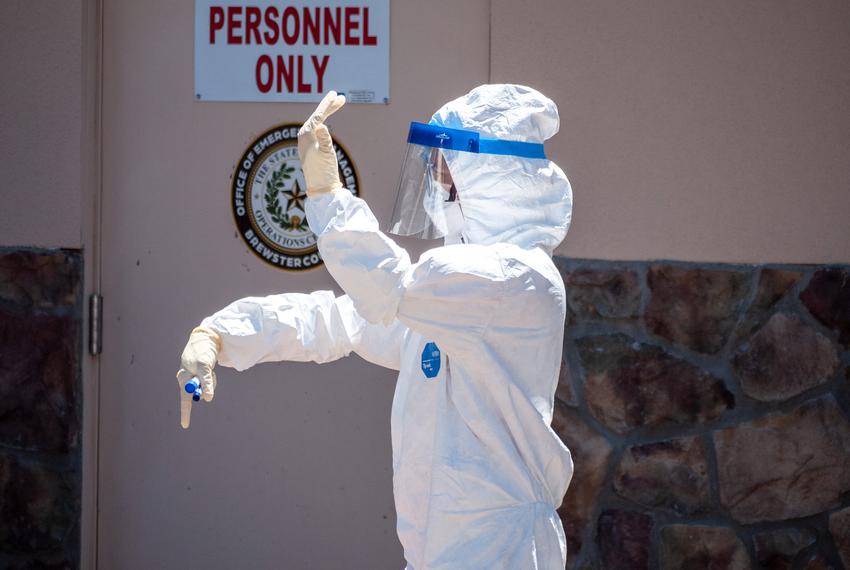
In just a few months, Covid 19 has spread across the globe and left in its wake a trail of social paralysis, economic ruin and even death. While states across the US issued stay at home orders to slow their healthcare systems from being overrun, other states like New York, weren’t so lucky. As some U.S. states start to lift pandemic-related restrictions on businesses and public spaces, there is a fear that infections will resurge in those places — and that if that happens, the virus won’t stay put.
Crystal Watson of the Johns Hopkins Center for Health Security said “I do believe we are going to see additional surges of cases from this epidemic that will not be contained within a state. Neighboring states and perhaps states across the country and countries across the world are going to have cases imported from those outbreaks.” Experts say the problem is that diagnostic testing remains so limited that a second surge of cases could silently build. The nationwide goal of conducting 2 million tests a week is below what most experts say is needed to adequately track the virus and that plan won’t be in place until at least the end of May.
No one knows how quickly and how expansively the spread of the virus will pick up as states roll back restrictions, and governors are generally outlining gradual changes. The incubation period of 2 to 14 days coupled with the turn-around time of test results in some areas taking a few days, means we just have to wait and see if reopened states will experience a surge in cases. More than half the states have relaxed restrictions but experts say it will be at least two to three weeks before we see an increase in the number of infections because it takes time for individuals to infect others and for them to display symptoms.
Public health experts warned of the possibility of spikes before states made the decision to reopen. Even as their predictions prove true in some states, others are still moving forward with plans to reopen. Proponents of relaxing social distancing restrictions also point out that spikes in positive cases are to be expected with expanded testing.
In Georgia, gyms, salons, and restaurants are operating with limits. In Colorado, retail stores can have curbside pickup and elective surgeries are back on. And starting tomorrow, malls, theaters, and restaurants in Texas can open with 25% occupancy. These and other states have plans for further easing of distancing policies as long as case counts don’t spike. If these states do see spikes they may have to roll back the restrictions as needed.
Read more
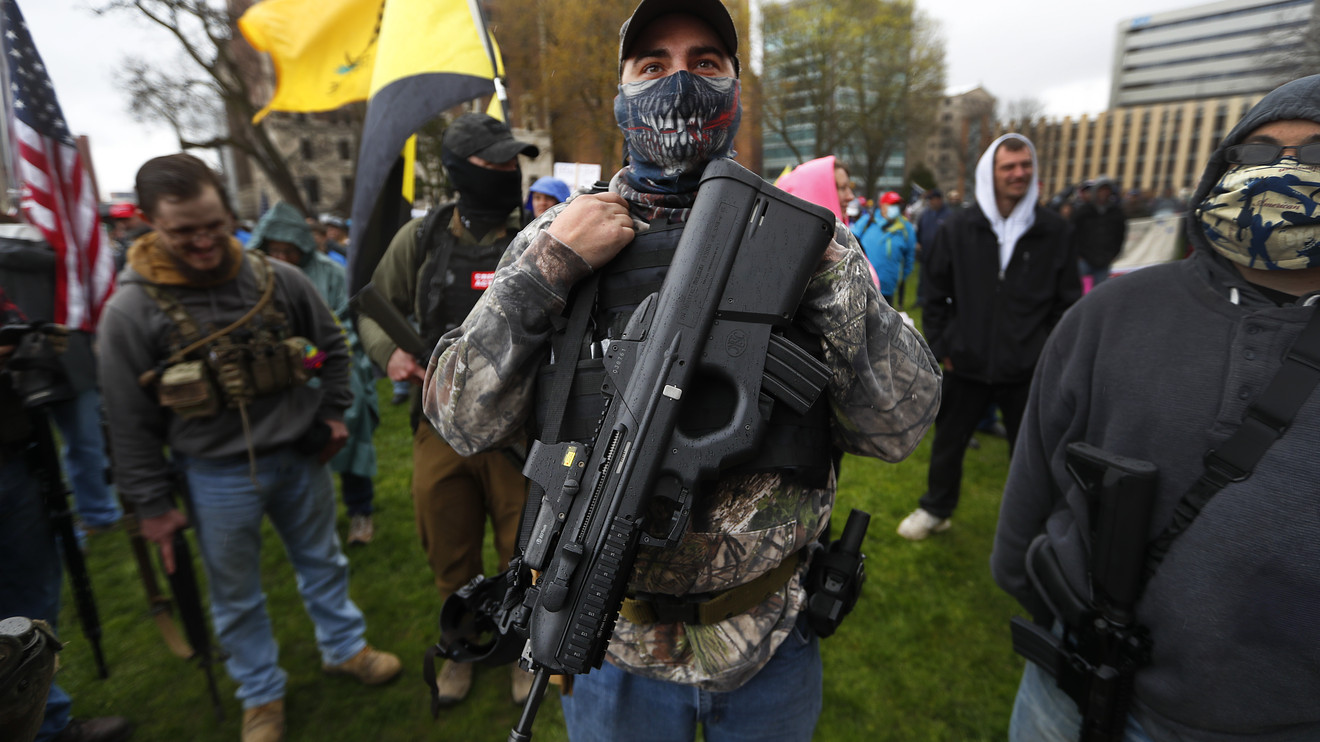
Michigan Governor Gretchen Whitmer extended a state of emergency declaration until May 28, over the objections of some state lawmakers. Whitmer signed a series of executive orders hours before the state of emergency was set to expire on April 30 and extended it to May 28, citing the growing number of cases and deaths in the state from the disease. The governor said that in some counties in western and northern Michigan, cases are doubling every six days or faster.
When the order was extended, the state had 41,379 confirmed COVID-19 cases and 3,789 deaths, according to data from the Center for Systems Science and Engineering at Johns Hopkins University. Wayne County, Michigan, is the fourth-highest county of deaths in the nation with 1,782 coronavirus-related fatalities, according to the data.
Whitmer has faced fierce backlash for her strict stay-at-home mandate. She extended the order earlier this month until May 15 but eased some restrictions on public activities as the state’s coronavirus cases stabilize. Whitmer said that while she understands that people are anxious to get back to work and are restless, Thursday’s protests were “disturbing. … Swastikas and the confederate flag, nooses and automatic rifles do not represent who we are as Michiganders. There is nothing that I want more than to just flip the switch and return to normal, but that’s not how it’s going to work, unfortunately. The only way we can get through this and take the next steps forward is if we all continue to do our part.”
Hundreds of people protested outside the Michigan Capitol building in Lansing-defying social distancing rules, many of them armed with assault rifles and wearing tactical gear. The crowd packed into the Capitol rotunda and tried to storm onto the floor of the legislative chamber. Protesters held signs, waved American flags and even carried firearms, while some chanted “Let us in!” and “This is the people’s house, you cannot lock us out.” Others tried to get onto the House floor but were blocked by state police and sergeants-at-arms.
The House and Senate had voted to approve legislation that would allow them to sue Whitmer over her emergency declarations as armed protesters stormed the state capitol. They also voted on another bill that would extend some of her emergency measures, but crucially not the stay-at-home order. Their bill would also allow restaurants, bars and gyms to reopen. Whitmer vowed to veto the bill. Amid the chaos Democrat Senator Sylvia Santana was pictured wearing a bulletproof vest and surgical mask while at her desk, as a colleague tweeted an image of rifle-wielding men on a balcony above her.
The governor is claiming authority to rule by executive order under two pieces of legislation – the 1976 Emergency Management Act and a similar 1945 law that allows a governor to declare a state of emergency and assume emergency powers. Arguments center around the fact that the 1976 law says governors must go to the Legislature if they want to extend the state of emergency past 28 days. The 1945 act says governors decide when the emergency is over.
Whitmer’s extended order bans gyms, theaters, bars and casinos from opening, and limits restaurants to carry-out and delivery orders only. Restaurants can allow up to five people inside at a time to pick up orders, but only if they follow social distancing guidelines by staying six feet apart. The restrictions do not apply to office buildings, grocery stores, markets, food pantries, pharmacies, drug stores, medical equipment/supplies providers, health care facilities, residential care facilities, juvenile justice facilities, warehouse and distribution centers, or industrial and manufacturing sites.
Read more
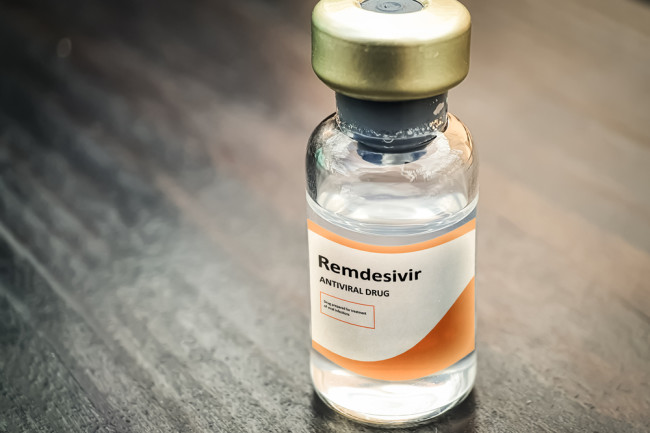
The Food and Drug Administration (FDA) announced the emergency use authorization for the antiviral drug remdesivir, after preliminary results from a federal trial showed the drug could speed recovery in patients infected with the coronavirus. The finding, which has not yet been peer reviewed, came after another study found no benefit for the drug in severely ill patients in China. The new results suggest a moderate improvement in the death rate of patients taking remdesivir, whose hospital stays were shortened, on average, from 15 days to 11.
The issuance of an EUA is different than FDA approval. In determining whether to issue an EUA, the FDA evaluates the available evidence and carefully balances any known or potential risks of any unproven products with any known or potential benefits of making them available during the emergency. Based on evaluation of the emergency use authorization criteria and the scientific evidence available, it was determined that it is reasonable to believe that remdesivir may be effective in treating COVID-19, and that, given there are no adequate, approved, or available alternative treatments, the known and potential benefits to treat this serious or life-threatening virus currently outweigh the known and potential risks of the drug’s use.
The emergency use authorization (EUA) allows for remdesivir to be distributed in the U.S. and administered intravenously by health care providers, as appropriate, to treat suspected or laboratory-confirmed COVID-19 in adults and children hospitalized with severe disease. Severe disease is defined as patients with low blood oxygen levels or needing oxygen therapy or more intensive breathing support such as a mechanical ventilator.
The EUA requires that fact sheets that provide important information about using remdesivir in treating COVID-19 be made available to health care providers and patients, including dosing instructions, potential side effects and drug interactions. The EUA is temporary and will be effective until the declaration that circumstances exist justifying the authorization of the emergency use of drugs and biologics for prevention and treatment of COVID-19 is terminated. It may be revised or revoked if it is determined the EUA no longer meets the statutory criteria for issuance.
Possible side effects of remdesivir include increased levels of liver enzymes, which may be a sign of inflammation or damage to cells in the liver; and infusion-related reactions, which may include low blood pressure, nausea, vomiting, sweating, and shivering.
The top coronavirus task force scientist Dr. Anthony Fauci welcomed news of the first potential treatment for COVID-19. The U.S. government will coordinate the donation and distribution of remdesivir to hospitals in cities most heavily impacted by COVID-19. Given the severity of illness of patients appropriate for remdesivir treatment and the limited availability of drug supply, hospitals with intensive care units and other hospitals that the government deems most in need will receive priority in the distribution of remdesivir.
Read more


